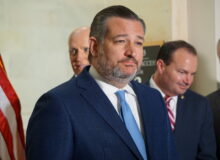The key days of the key World War II battle that shifted the U.S. from defense to offense in the Pacific occurred 75 years ago this Sunday and Monday (June 4-5). As it happened, completely oblivious to the anniversary, I rented the 1976 movie Midway on Friday night, remembering that I had wanted to see it when I was 12 years old but somehow had not made it to the theater in time. Great flick, great cast! (Charlton Heston, Henry Fonda, Glenn Ford, Hal Holbrook, James Coburn, Edward Albert, Robert Mitchum, Robert Wagner, Pat Morita, Tom Selleck, Cliff Robertson, even Erik Estrada.) Very well worth seeing — and, aside from the creation of fictional characters for Heston and Albert who served to provide a narrative center to the movie, it apparently hewed extremely closely to the actual facts of the battle.
Anyway, the very next day the Wall Street Journal featured a terrific column on the battle, also well worth reading (although it is largely behind a firewall).

(U.S. Navy photo illustration/Released)
The battle of Midway, exactly two years before D-Day in France, was almost as important to the Pacific theater of war as D-Day was to the European theater — and it makes a gripping tale. I rarely do this, but I heartily urge anybody interested in the battle to read the truly superb account of it at Wikipedia. The beginning paragraphs are below. All hail the courage, and the improvisational guts, of the American fighter in World War II! — Quin
From Wikipedia (please do read the full thing there):
The Battle of Midway was a decisive naval battle in the Pacific Theater of World War II.[6][7][8] Between 4 and 7 June 1942, only six months after Japan‘s attack on Pearl Harbor and one month after the Battle of the Coral Sea, the United States Navy under Admirals Chester Nimitz, Frank Jack Fletcher, and Raymond A. Spruance decisively defeated an attacking fleet of the Imperial Japanese Navy under Admirals Isoroku Yamamoto, Chuichi Nagumo, and Nobutake Kondo near Midway Atoll, inflicting devastating damage on the Japanese fleet that proved irreparable. Military historian John Keegan called it “the most stunning and decisive blow in the history of naval warfare.”[9]
The Japanese operation, like the earlier attack on Pearl Harbor, sought to eliminate the United States as a strategic power in the Pacific, thereby giving Japan a free hand in establishing its Greater East Asia Co-Prosperity Sphere. The Japanese hoped another demoralizing defeat would force the U.S. to capitulate in the Pacific War and thus ensure Japanese dominance in the Pacific. Luring the American aircraft carriers into a trap and occupying Midway was part of an overall “barrier” strategy to extend Japan’s defensive perimeter, in response to the Doolittle air raid on Tokyo. This operation was also considered preparatory for further attacks against Fiji, Samoa, and Hawaii itself.
The plan was handicapped by faulty Japanese assumptions of the American reaction and poor initial dispositions. Most significantly, American cryptographers were able to determine the date and location of the planned attack, enabling the forewarned U.S. Navy to prepare its own ambush. There were seven aircraft carriers involved in the battle and all four of Japan’s large aircraft carriers—Akagi, Kaga, Soryu and Hiryu, part of the six-carrier force that had attacked Pearl Harbor six months earlier—and a heavy cruiser were sunk, while the U.S. lost only the carrier Yorktown and a destroyer. After Midway and the exhausting attrition of the Solomon Islands campaign, Japan’s capacity to replace its losses in materiel (particularly aircraft carriers) and men (especially well-trained pilots and maintenance crewmen) rapidly became insufficient to cope with mounting casualties, while the United States’ massive industrial and training capabilities made losses far easier to replace. The Battle of Midway, along with the Guadalcanal Campaign, is widely considered a turning point in the Pacific War…….
[Again, much, much more of this fine article is at Wikipedia.]






